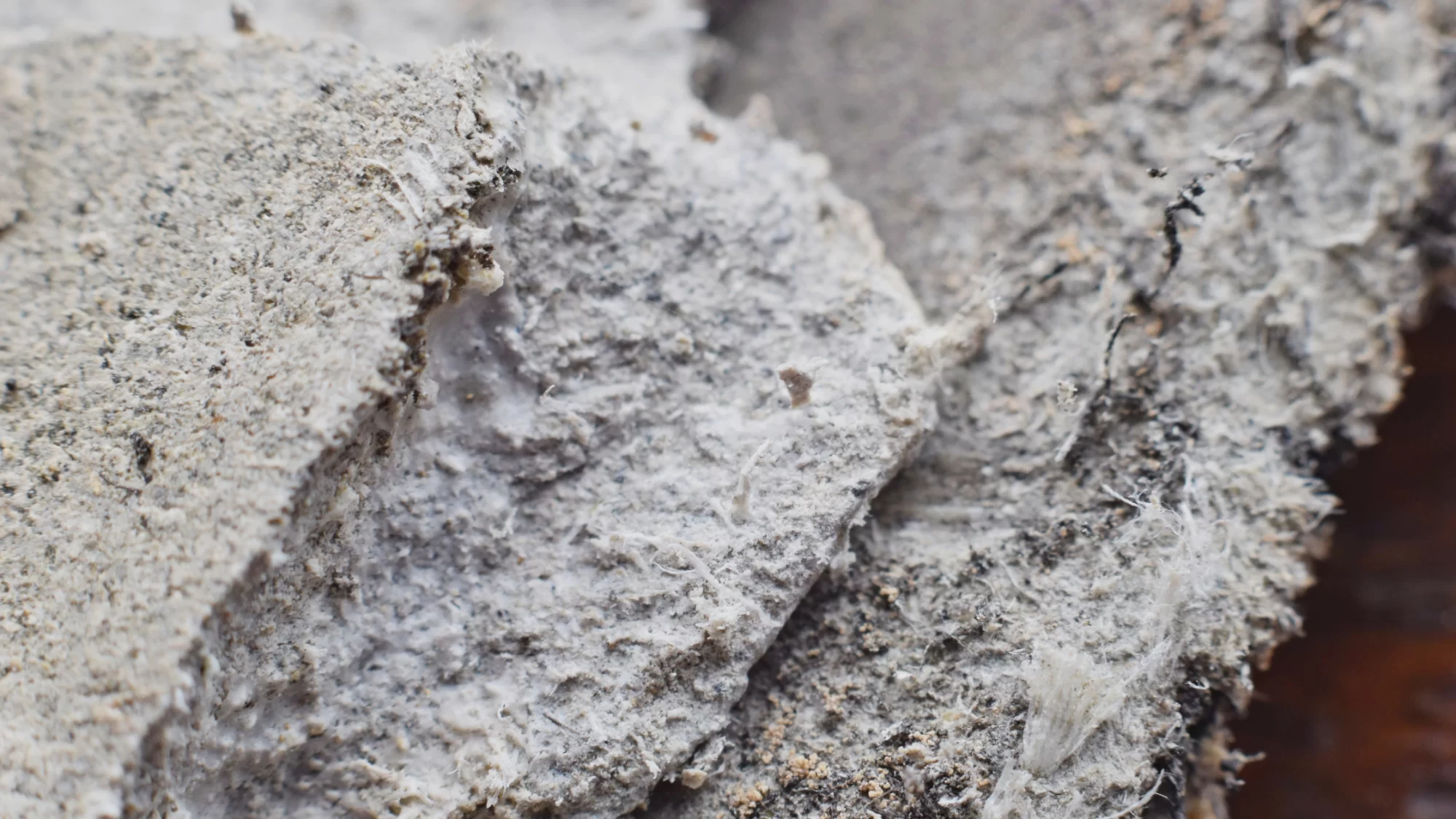In Ireland, discovering asbestos in a property during renovation can be concerning due to the health risks associated with asbestos fibers.
Asbestos was used in many construction materials from the 1950’s through to the 90’s when it was ruled too dangerous to use with all manufacturing stopped under legistative changes in 1999.
Asbestos can be found in any old building which was built or refurbished before 2000. It was commonly used as a means of insulating and fireproofing, but it was also used in a variety of different formats. As a result, it can be found in building materials used for:
- Flooring – eg. old vinyl tiles
- Walls – in older plasterboards and jointing compounds
- Ceilings – tiles & plasterboards
- Roofs – flat roof tiles that are often confused with modern fiber cement tiles
- Heating systems and equipment – pipe lagging and firestopping; can bear resemblance to spun glass wool fibre.
Here’s a step-by-step guide on what to do if you find asbestos in your property:
1. Stop Work Immediately
If you suspect asbestos is present, halt all renovation activities. Asbestos fibers can become airborne if disturbed, posing serious health risks.
2. Assess the Situation
Do not touch or disturb the material. Assess whether the asbestos-containing materials (ACMs) are in good condition or damaged. If they are intact and undisturbed, the risk may be lower compared to damaged ACMs.
3. Contact a Professional
Engage a qualified and licensed asbestos surveyor or consultant to confirm the presence of asbestos. They can take samples and conduct a survey to determine the type and condition of the asbestos.
4. Inform Relevant Authorities (if necessary)
Depending on the situation and regulations, you may need to inform local authorities, ESPECIALLY if there is a risk of asbestos fibers spreading to the public. Even if you are conducting the renovation works yourself you have a duty of care to others and members of the public.
5. Plan for Safe Removal
If asbestos is confirmed, it must be removed or managed safely. Only licensed asbestos removal contractors should handle asbestos removal, encapsulation, or any related work. Contact the National Waste Collection Permit Office to find a contractor. These professionals are trained to follow strict safety protocols to prevent exposure and contamination.
6. Follow Safety Guidelines
Ensure that the removal contractor follows all safety guidelines, including:
- Sealing off the work area.
- Using protective clothing and equipment.
- Employing proper ventilation and dust suppression techniques.
- Proper disposal of asbestos waste at a licensed facility.
7. Post-Removal Clearance
After removal, an independent surveyor should conduct an air test to ensure no asbestos fibers remain in the air. A clearance certificate should be issued to confirm the area is safe.
8. Disposal of Asbestos Waste
Asbestos waste must be disposed of at a licensed facility, there are currently no facilities in Ireland and asbestos waste is transported to the Netherlands or Germany for safe processing. The removal contractor will typically handle this, ensuring compliance with hazardous waste regulations.
9. Documentation and Record Keeping
Keep all records related to the asbestos survey, removal, disposal, and clearance for future reference, especially if you sell the property.
10. Re-assessment and Monitoring
If asbestos-containing materials are left in place but undisturbed, regular monitoring is advised to ensure they remain in good condition.
Regulations and Compliance
Ireland’s Health and Safety Authority (HSA) and the Environmental Protection Agency (EPA) provide guidelines and regulations regarding asbestos management. Compliance with these regulations is essential to ensure the safety of occupants and workers.
Key Points:
- Do not attempt to remove asbestos yourself. It is a dangerous material and should only be handled by professionals.
- Safety first. Protecting the health of all individuals involved is the priority.
For more detailed guidance, consulting the HSA or engaging with a professional asbestos management service is recommended.

